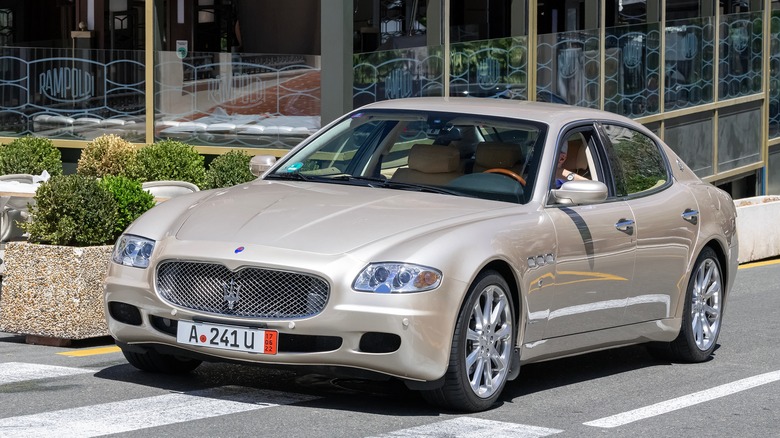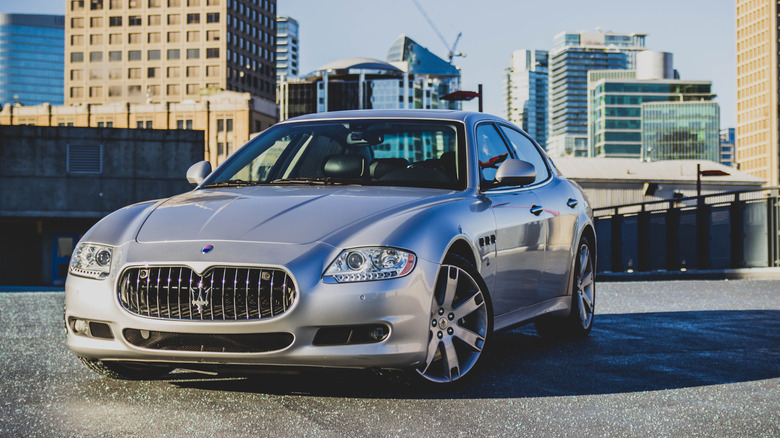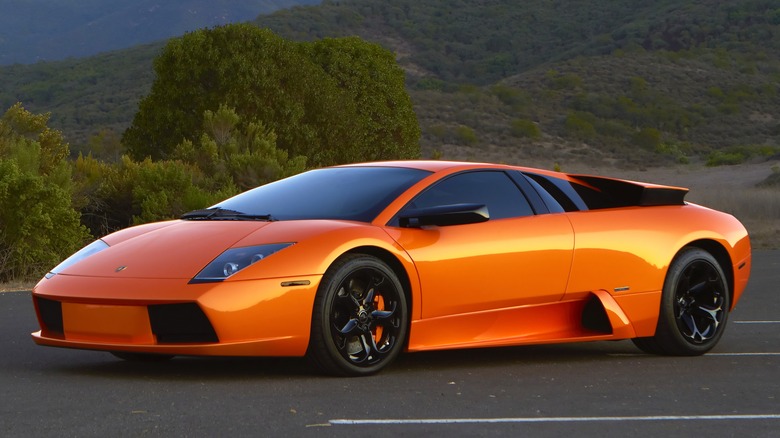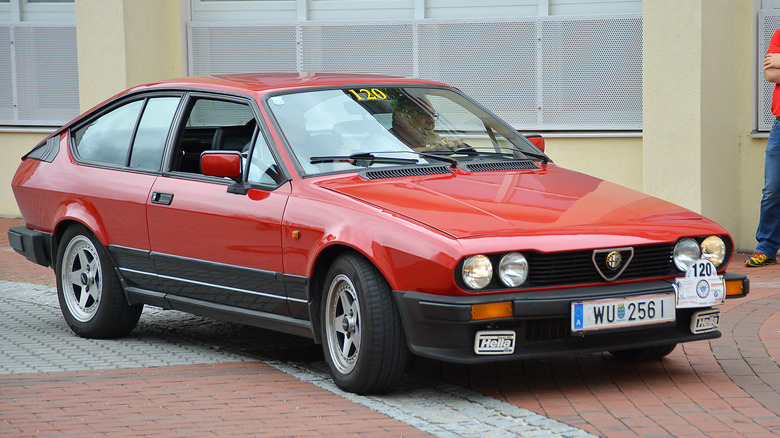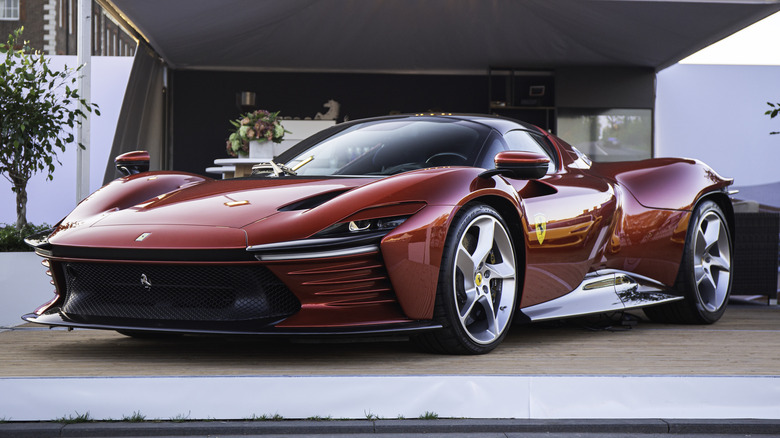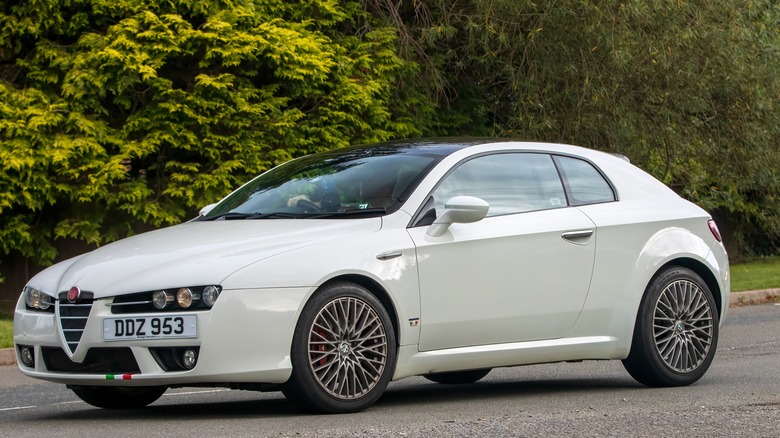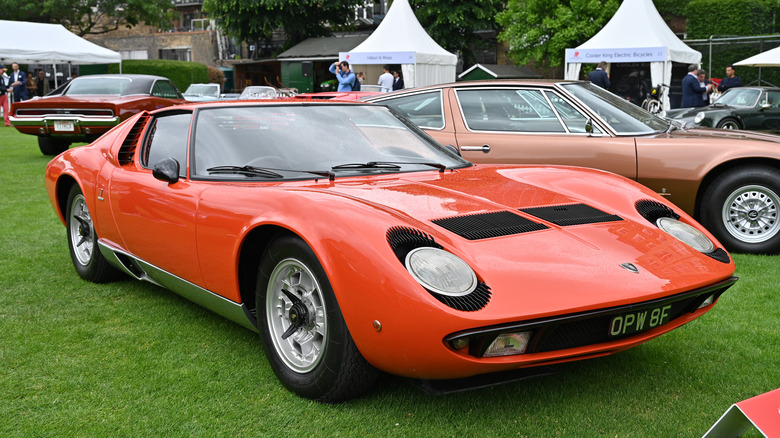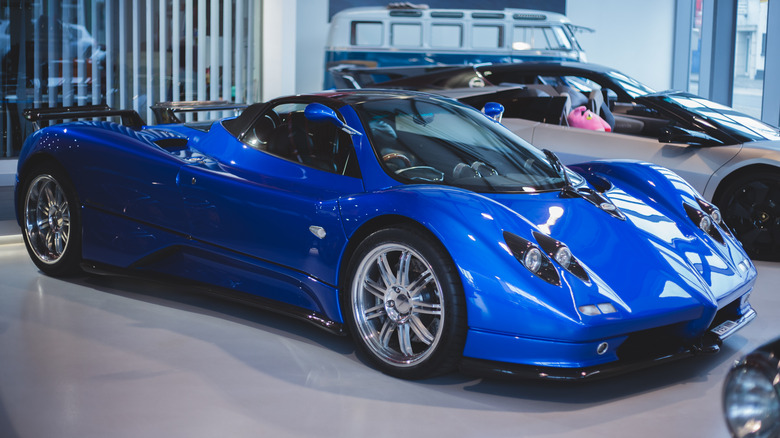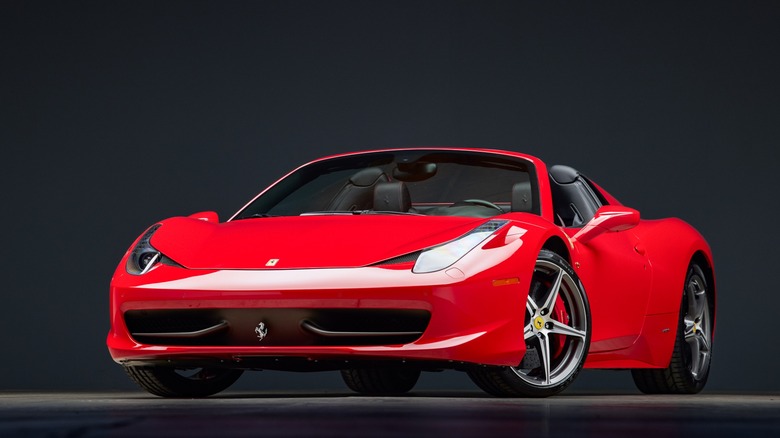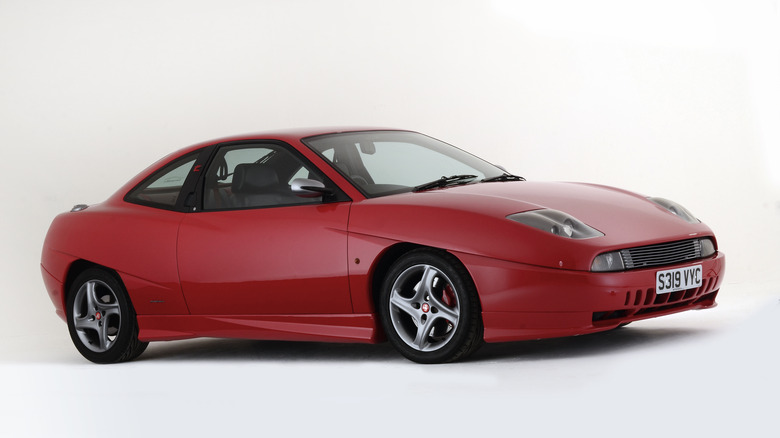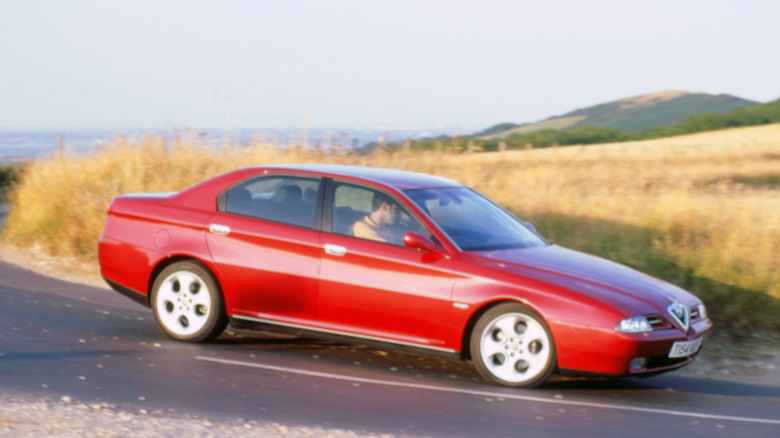10 Timeless Italian Cars That Will Always Turn Heads
Despite being proven otherwise on many occasions, quite a few stereotypes exist about cars based on the country or region they come from. For example, German cars are always over-engineered and precise, but they can also have some befuddling issues in the case of VW; Japanese cars are no-nonsense and about as reliable as it gets; French cars are known for being quirky, with that often coming at the cost of functionality, and so on.
Italian cars? They're known for being extra stylish and good-looking. Believe it or not, the Italians have disproved this on many occasions, but in some cases, this preconception is absolutely true. Italy has produced some of the finest-looking automobiles of the past century, and many of them combine stunning good looks with the unique ability to look good even 10, 15, and even 20 years later.
The design of Italian cars evokes a special feeling in a lot of enthusiasts, and no matter how old some of these fine autos get, they are guaranteed to still turn heads.
Maserati Quattroporte (Fifth Generation)
While the fourth generation Quattroporte and its somewhat unimaginative (although still attractive) styling still hold a special place in the heart of many an enthusiast, the fifth generation car, introduced in 2003, was a brave new step in the right direction.
Gone was the boxy, subdued styling, and in its place came a thoroughly modern-looking luxury sedan that looked ahead of its time back then, and it still looks fantastic even today. Well, maybe, except for those front light clusters. After pressing a couple of buttons, the fifth generation Quattroporte was able to stir the soul in the auditory department, as well. The two V8 units that powered this generation Quattroporte come courtesy of Ferrari, except they swap out the flat-plane crankshaft for a cross-plane item. The result is a sonorous V8 noise that doesn't sound very typical but is still unmistakably Maserati.
Of course, it wasn't without fault. The earlier fifth gen Quattroportes featured the notoriously unreliable DuoSelect semi-automatic transmission, which was very prone to breaking and was super expensive to maintain. Luckily, the later cars and their ZF automatic improved things significantly, and the Quattroporte became quite the alternative to the established Germans. Provided it's been well-maintained, it's still one of the cheapest used luxury sedans on the market and a one-way ticket to looking rich.
Lamborghini Murcielago
As well as being the last V12 Lambo to offer a manual transmission and the first one to be put together after Audi took over entirely, the Murcielago has one other very important distinction. After the Reventòn in 2008, Lamborghini started to lean heavily into the fighter jet inspiration when it came to the exterior design department. The Reventòn, the Aventador, the Siàn, and all the rest of them make the Murcielago look somewhat restrained.
In a way, the restraint in the Murcielago's design is what makes it such a stunning car. It manages to be simple and elegant without hiding its real intentions: a fire-breathing V12 supercar that will make it impossible to stop smiling. Speaking of V12, it was a 6.2-liter unit in the original run, then a much fruitier 6.5-liter V12 unit beginning with the facelifted Murcielago LP640-4.
Even though most Lambos get their names from fighting bulls, Murcielago is actually the Spanish word for "bat." It goes further than nomenclature, as one of the Murcielago's signature traits is the aerodynamic bat wings hidden behind the doors. Thanks to mostly the internet, the Aventador continually steals the show, and it's high time for the Murcielago to get some love as well.
Alfa Romeo Alfetta GTV
It's crazy to think, but in the '70s and '80s, Alfa Romeo had a genuine contender for the BMW 5 Series and Mercedes E-Class: the Alfetta. The Alfetta comes from the much-loved RWD era of Alfa Romeo, with a rear-mounted transaxle for improved weight distribution, and it was a fairly typical mid-size sedan with a little Italian magic sprinkled in.
The GTV was spun off from the Alfetta architecture, and it's an absolute stunner. The crazy fastback design was definitely worth a second glance, and it would make a VW Scirocco blush. Leave it to Giorgetto Giugiaro, who penned the original design of the GTV, to put together such an eye-catching design. A lot of the exterior styling bore a slight resemblance to the Montreal supercar, which is in no way a bad thing.
It wasn't just the looks that made the GTV special, it was also the powertrains on offer. There were Twin Spark units, of course, but the GTV also played host to one of the greatest V6 engines ever developed: the Busso V6.
Ferrari Daytona SP3
For a long time, Pininfarina was in charge of Ferrari's designs. Some of the automaker's best-looking cars came along while the Italian design house was at the reigns, with its portfolio including stuff like the F12berlinetta and the 458. Even though Ferrari's in-house designs may not be as classically beautiful as the Pininfarina models, the Daytona SP3 completely rewrites the established rules.
The SP3 is the third ultra-limited, monstrously expensive model from the Icona line, after the Monza SP1 and Monza SP2. It's the automaker's first mid-engined V12 car in a long time, and that V12 is of the 6.5-liter, 840 hp variety. Nothing to write home about, is it?
All that power is shrouded in a stunning body that pays homage to the incredible 330 P race cars from the 1960s, similar to the ones that challenged (and lost to) the Ford GT40. It also includes a removable hardtop, and in terms of sheer drama, the Daytona SP3 is easily one of the best modern Ferraris, and an honor to the original and glorious 330 P4.
Alfa Romeo Brera
When starting the career mode in Need for Speed Carbon, players were given three car choices: the Mazda RX-8, the '67 Chevy Camaro, and the Alfa Romeo Brera. Thanks to the 2006 NFS installment, much of the Western world got introduced to the Brera, one of many sporty FWD coupes launched in the mid-2000s. Based on the 159 platform, the Brera was truly in a league of its own when it came to looks.
It was part of the booming sporty FWD car craze of the 2000s and the early 2010s, facing stiff competition from the VW Scirocco, the Peugeot RCZ, and the Volvo C30. In the eyes of many, particularly the most vocal of Alfa Romeo enthusiasts, the Brera was stunning, and easily one of Alfa's best modern designs.
It also had pretty good performance to back it all up, with powertrain options including the famous 1750 TBi, a five-cylinder turbodiesel, and a 3.2-liter V6 (that, sadly, was not the Busso). Still, with that curvaceous shape, triple headlights, and those massive quad exhausts, it didn't matter what was under the hood, as the Brera's looks did most of the talking for it.
Lamborghini Miura
It's impossible to talk about timeless and gorgeous Italian cars without mentioning one of the most influential cars of the 20th century. The Miura, while not the first ever Lamborghini, was the first of a category that the world would eventually come to call the supercar. That was mostly thanks to its powertrain layout: the engine was in the rear middle instead of the front.
Once the Miura opened the dance, other supercar manufacturers quickly joined the floor. No matter which version it was, the Miura was breathtaking. When it was first launched in the late 1960s, it was unlike anything anyone had ever seen before. We're used to mid-engined supercars nowadays, but back then, it was complete science fiction.
Plenty of unique, characteristic styling cues made the Miura special, like the doors with built-in horns and the eyelashes surrounding the headlights on the earlier cars. Sadly, like a lot of early Lambos, it was prone to some minor issues. But when you get out and turn around, the Miura isn't just a work of art looking back at you; it is a total revolution.
Pagani Zonda
Horacio Pagani's first notable step in his career came when he was put in charge of designing the amazing, bespoilered 25th Anniversary Edition of the Lamborghini Countach. After that project, he went on to start his own thing. It was a well-known fact that Ferrari and Lamborghini were unstoppable at their own game, but Pagani was the first to actually succeed in a lot of ways.
The first car to come out of Automobili Pagani was the Zonda, named after an Argentinian wind, which is a nod to Mr. Pagani's heritage. He was the man behind the design, and the Zonda provided a fresh new take on what the supercar should look like. With its incredible aerodynamic shape, the lashings of carbon fiber, the aviation themes, and that all-important quad exhaust, the Zonda is one beautiful supercar.
As you might expect from a supercar to come out of Italy, it was a treat for the ears, too. Power came courtesy of a 7.3-liter naturally-aspirated V12 from Mercedes' AMG department. They have made a good engine or two in the past, and this was no exception. Unless somebody messed around with the exhaust on their W140 S-Class, you can hear a Zonda coming from miles away and instantly know it's a Zonda. Despite releasing two entire models in the past 25 years or so, Pagani also can't seem to stop making the Zonda.
Ferrari 458
The 355, the 360, and the 430 were all fairly cautious steps in the V8-powered Ferrari's evolution. The 458, introduced in 2009, was when things took a pretty major turn. The evolution was replaced by revolution, and what a revolution it was. Penned by Pininfarina, the 458 was Ferrari showing, among other things, that it took great offense to some of the negative comments surrounding the 360 and the 430's design.
Vents next to the headlights, a totally different shape, and, of course, the triple exhaust F40 tribute band were just some of the 458's defining features. That's not even touching on the most unique aspect of its design: the discernible lack of cooling vents or NACA ducts all over the bodywork.
That's because Ferrari's engineers hid all of them underneath the bodywork to make the body as smooth and decluttered as possible, and it worked great. When the 488 came out in 2016 to replace the 458, it put some of the vents back on the body and lost some of that simplistic, unfussy charm as a result. As well as looking fantastic, the 458 packed a punch, thanks to a 4.5-liter naturally-aspirated V8 that revs to a shouty 9,000 rpm and puts out 562 hp.
Fiat Coupe
Fiat has a reputation for mostly building economy cars that are pretty affordable, fun-looking, and surprisingly reliable and sturdy. Back in the 90s, Fiat still had a fun side, though the embodiment of that wasn't a 500 with a scorpion badge and the world's angriest-sounding exhaust (not that that's a bad thing). The peak of the Italian automaker's fun side in the 90s came in the form of the simply named Coupe.
The angular wedge shape and those cut-off fenders led to many labeling the Coupe as a mini Ferrari. Despite some minor resemblances, the Coupe was far from a Ferrari, as it was FWD and front-engined. If there's one thing it shared with most Ferraris, however, it was the ability to turn heads with its endless 90s cool.
Things got even better under the hood, as one of the powertrains on offer for the Coupe was a 20V turbocharged five-cylinder, which made a glorious noise and offered some pretty solid performance. Even the Pininfarina-styled interior was a special place to be, thanks to its exterior color-coded panels and that awesome gauge cluster.
Alfa Romeo 166
Nobody realized it at the time, but the 166 was the last time that Alfa Romeo would attempt a 5 Series and E-Class rival. It came along in the late 90s, and because it was designed primarily for Europe, it never reached the US or Canada. That's a shame because, despite its expected flaws, the 166 was a cracking mid-size sedan.
First, it was classically beautiful, as Alfa Romeos almost always have been. Even the earlier cars with the tiny headlights looked great, but the facelift made everything more modern and even better looking. The proportions were just right, and nothing was too fussy or overstyled. The E60 5 Series came along while the 166 was still around, and as everyone was finding it difficult to get used to the Bangle designs, the 166 had a leg up in that department. It was also one of the only production cars at the time to have LED turn signals in the taillights.
Engine choices were also great, as one of the ones on offer was that Alfa Romeo staple, the Busso V6. There was a five-cylinder turbodiesel and a whole host of others. Sadly, a bad depreciation curve combined with Alfa's reputation for dependability killed the 166 after a pretty short production run, and it never got a proper revival. Despite being 25 years old, it has aged gracefully.
